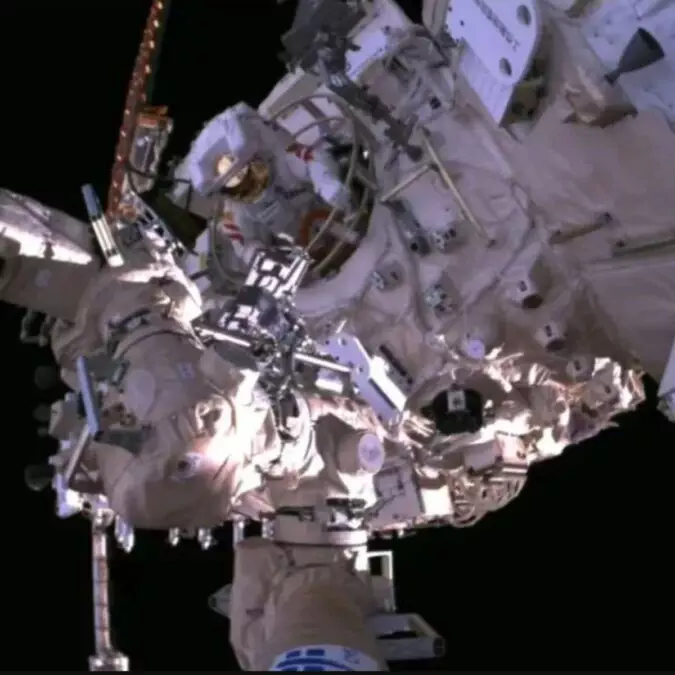Top Stories Tamfitronics

HELSINKI — China’s human spaceflight agency has selected two proposals to develop spacecraft for low-cost space station resupply missions, echoing earlier moves by NASA.
The China Manned Space Engineering Office (CMSEO) opened a call last year for proposals for low-cost cargo transportation systems to serve the Tiangong space station. Four proposals from 10 submissions were chosen to enter a detailed design phase in September 2023.
Now, two teams have won through, CMSEO announced during a Oct. 29 press conference. The agency has selected the Qingzhou cargo spacecraft from the Innovation Academy for Microsatellites of the Chinese Academy of Sciences (IAMCAS) and the Haolong cargo space shuttle proposal from the Chengdu Aircraft Design Institute under the Aviation Industry Corporation (AVIC).
Notably, the former will launch on a CAS Space Lijian-2 kerosene-liquid oxygen rocket, expected to debut in the second half of 2025. CAS Space is a spinoff from the Chinese Academy of Sciences. While close to state-owned CAS, it marks the first time an ostensibly commercial space company in China will participate in the national space station project.
AVIC, while engaged to a limited extent in some earlier national space activities, is not a traditional actor in the Chinese space ecosystem.
Low cost “Haolong”/昊龙 cargo shuttle concept from–curiously– AVIC will be on display at the Zhuhai airshow. It is one of two concepts selected by CMSEO for low cost cargo missions to Tiangong, along with one from Microsat and CAS Space. https://t.co/FNMbyAm0j3 pic.twitter.com/qWu6mLDPho
— Andrew Jones (@AJ_FI) October 29, 2024
“Through this selection, scientific research institutes and commercial space companies outside of traditional space enterprises have been attracted to participate in the development of flight products such as crewed space engineering ships and rockets,” Lin Xiqiang, deputy director and spokesperson for CMSEO said Oct. 29.
The development is “conducive to building a healthy, benign and dynamic new pattern of human spaceflight competition and development, further reducing the operating costs of the space station, and promoting the rapid, orderly and healthy development of commercial aerospace,” Lin added.
Great news! Kinetica-2 has been selected as top launcher choice in the “Space Station Low-cost Cargo Transportaion System” bid by CMSA. Kinetica-2 proposal was competing among 10 peers in 2023, 4 in early 2024, and has now become a winner of the bid.— CAS Space (@cas_space) October 29, 2024
Requirements for the low-cost cargo transportation system include being capable of sending not less than 1,800 kilograms to low Earth orbit. Additionally, it must offer a price of no more than 120 million yuan (US$17.2 million) per 1,000 kilograms delivered. The spacecraft should also be capable of controlled reentry and able to dispose of more than 2,000 kilograms of waste upon reentry.
Proposals from the China Academy of Space Technology (CAST), which developed China’s space station modules, Tianzhou cargo vessels and crewed spacecraft, and the country’s other large spacecraft developer, the Shanghai Academy of Spaceflight Technology (SAST), were the two proposals not selected at this juncture.
China completed the three-module, T-shaped Tiangong space station in late 2022. It aims to keep the space station constantly occupied and operational for at least a decade. It currently uses Tianzhou cargo spacecraft to resupply and refuel Tiangong. Tianzhou spacecraft burn up on reentry to Earth’s atmosphere and plunge into the Pacific Ocean. Shenzhou crew spacecraft meanwhile have limited capacity for bringing payloads back to Earth.
CMSEO first signaled its openness to commercial cargo services to Tiangong in early 2021. This likely led to the establishment of commercial companies such as AZSPACE and Interspace Explore.
China has been fostering a commercial space sector since late 2014 and has gradually expanded the scope of activities open to these entities.
A number of commercial launch companies are targeting debuting reusable medium-lift rockets in 2025, while cities and provinces are attempting to attract and nurture commercial space activity and companies with a range of action plans and incentives.
Tomas Hrozensky, a senior research fellow at the European Space Policy Institute (ESPI), told SpaceNews in 2023 that CMSEO’s moves are a clear indication that China is seeking to replicate the approach which yielded NASA a major success.
NASA’s own Commercial Resupply Services (CRS) program awarded contracts in late 2008 to Orbital Sciences Corp. and SpaceX. The first cargo flights to the International Space Station in 2012.
China is also looking to expand Tiangong with further modules in the coming years. This includes a co-orbiting Hubble-class space telescope which can dock with the space station for maintenance, repairs and potential upgrades.
With the selection of new cargo spacecraft and the gradual opening of national projects to new players, China appears to be laying the groundwork for a more dynamic and competitive space ecosystem.

Andrew Jones covers China’s space industry for SpaceNews. Andrew has previously lived in China and reported from major space conferences there. Based in Helsinki, Finland, he has written for National Geographic, New Scientist, Smithsonian Magazine, Sky…More by Andrew Jones



